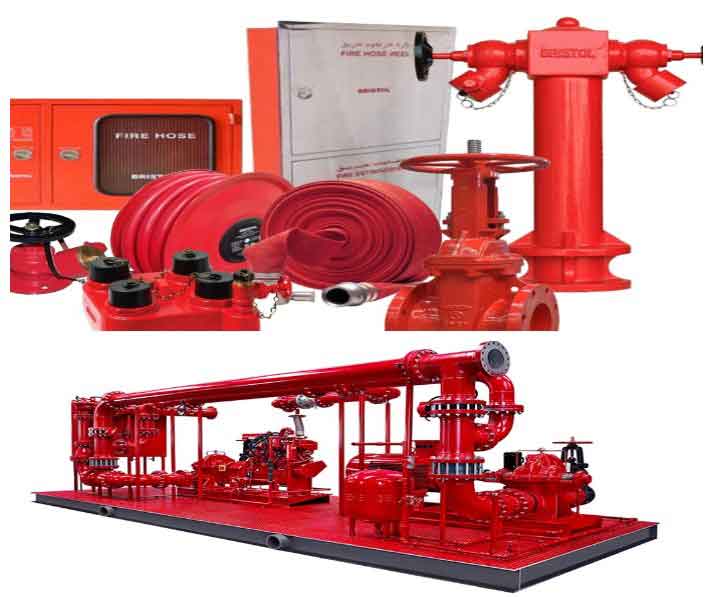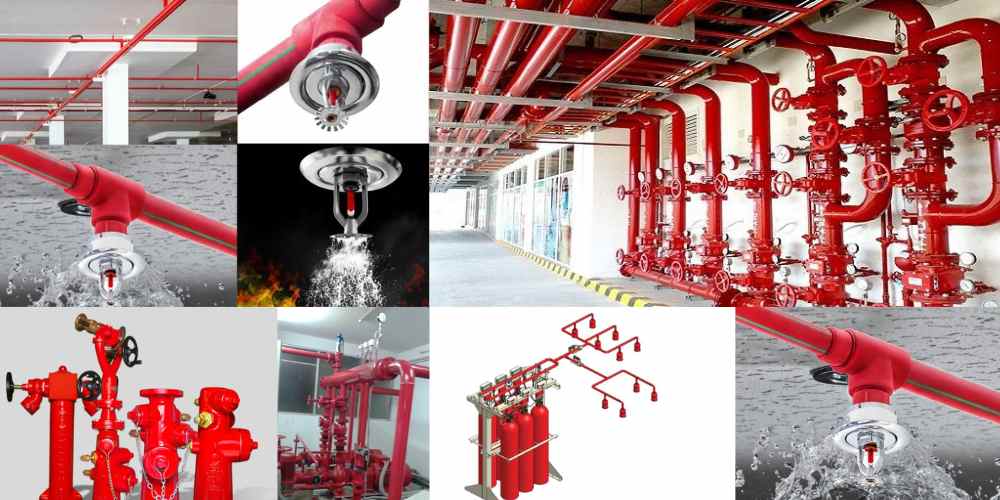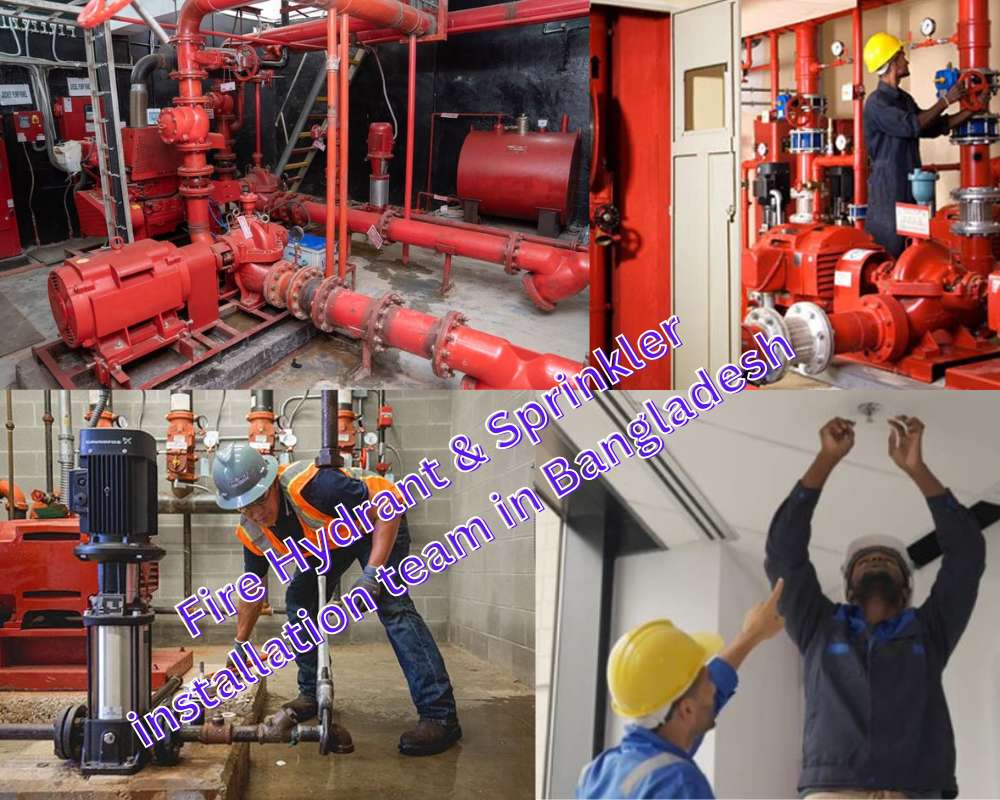Fire Safety in Bangladesh: Hydrants, Sprinklers, and Your Building’s Protection
Bangladesh’s rich tapestry extends beyond its cultural heritage. Fire safety is a vital thread woven into this vibrant nation’s future. From bustling Dhaka to serene villages, safeguarding lives and property from fires is paramount. Understanding fire hydrant systems and fire sprinkler systems is crucial for robust fire protection.

Fire Hydrants: A Ready Water Source for Firefighters
Fire hydrants are lifelines for firefighters. These permanent networks of underground pipes and valves connect to the municipal water supply. Above ground, standpipes with hose connections – the fire hydrants themselves – provide a dependable water source for extinguishing large fires.
Benefits of Fire Hydrant Systems:
- Constant Water Supply: Unlike fire trucks with limited water, hydrants offer a reliable flow to extinguish extensive fires.
- High Water Pressure: Firefighters can control flames effectively from a safe distance thanks to the hydrant’s strong water pressure.
- Strategic Placement: Cities and towns strategically place hydrants for firefighters’ quick access.
Limitations of Fire Hydrant Systems:
- Municipal Water Dependence: Hydrant effectiveness relies on the municipal water supply’s pressure and availability.
- Deployment Time: Connecting hoses and initiating water flow takes precious time in rapidly developing fire situations.
- Infrastructure Costs: Installation and maintenance of hydrant systems can be expensive due to significant infrastructure needs.

Fire Sprinklers: Automatic Defense Against Fire
Fire sprinkler systems are automatic fire suppression systems. A network of pipes with sprinkler heads at specific intervals runs throughout a building. When heat triggers a sprinkler head, water discharges directly onto the fire, suppressing it in its early stages.
Types of Fire Sprinkler Systems in Bangladesh:
- Wet Sprinkler Systems: These most common systems are filled with water, ready to discharge upon heat detection.
- Dry Sprinkler Systems: Ideal for areas prone to freezing temperatures, these systems use compressed air until a fire triggers the release of air and water flow.
Advantages of Fire Sprinkler Systems:
- Automatic Response: Faster than manual firefighting, sprinklers activate automatically upon detecting heat.
- Early Fire Suppression: By extinguishing fires early, they significantly minimize damage and save lives.
- Reduced Water Usage: Compared to fire hoses, sprinklers use less water to control fires, minimizing water damage.
Considerations for Fire Sprinkler Systems:
- Installation Costs: Installing a sprinkler system can be expensive, particularly for large buildings.
- Maintenance Needs: Regular maintenance is crucial to ensure the system functions properly.
- Potential Water Damage: While sprinklers use less water than hoses, they can still cause water damage to the building and its contents.
Choosing the Right Fire Protection System
The ideal fire protection system depends on several factors:
- Building Type and Occupancy: Different building types (residential, commercial, industrial) have varying fire risks and require different protection levels.
- Budget: Consider both installation and maintenance costs.
- Water Availability and Pressure: Fire hydrants rely on a dependable water supply, while sprinklers can be more independent.
- Water Damage Potential: The risk of water damage to sensitive equipment or cultural heritage needs evaluation.

FAQs: Fire Hydrants vs. Sprinkler Systems
Which system is best for my building?
There’s no one-size-fits-all answer! Both systems have advantages. Consult a fire protection professional to determine the best fit for your building type, budget, and water availability.
Are fire hydrants mandatory in Bangladesh?
The Bangladesh National Building Code (BNBC) mandates specific fire protection systems in certain buildings. While hydrants themselves may not be mandatory everywhere, ensuring adequate water access for firefighting usually is.
How much does a fire sprinkler system cost in Bangladesh?
Costs vary depending on system size, complexity, and building characteristics. Generally, expect a starting price of several thousand taka per square meter (excluding installation). Consult with fire protection professionals for specific quotes.
By understanding fire hydrants, fire sprinklers, and their applications, you can make informed decisions about your building’s fire safety. Remember, fire safety is a shared responsibility. Let’s work together to safeguard lives and property in Bangladesh.
